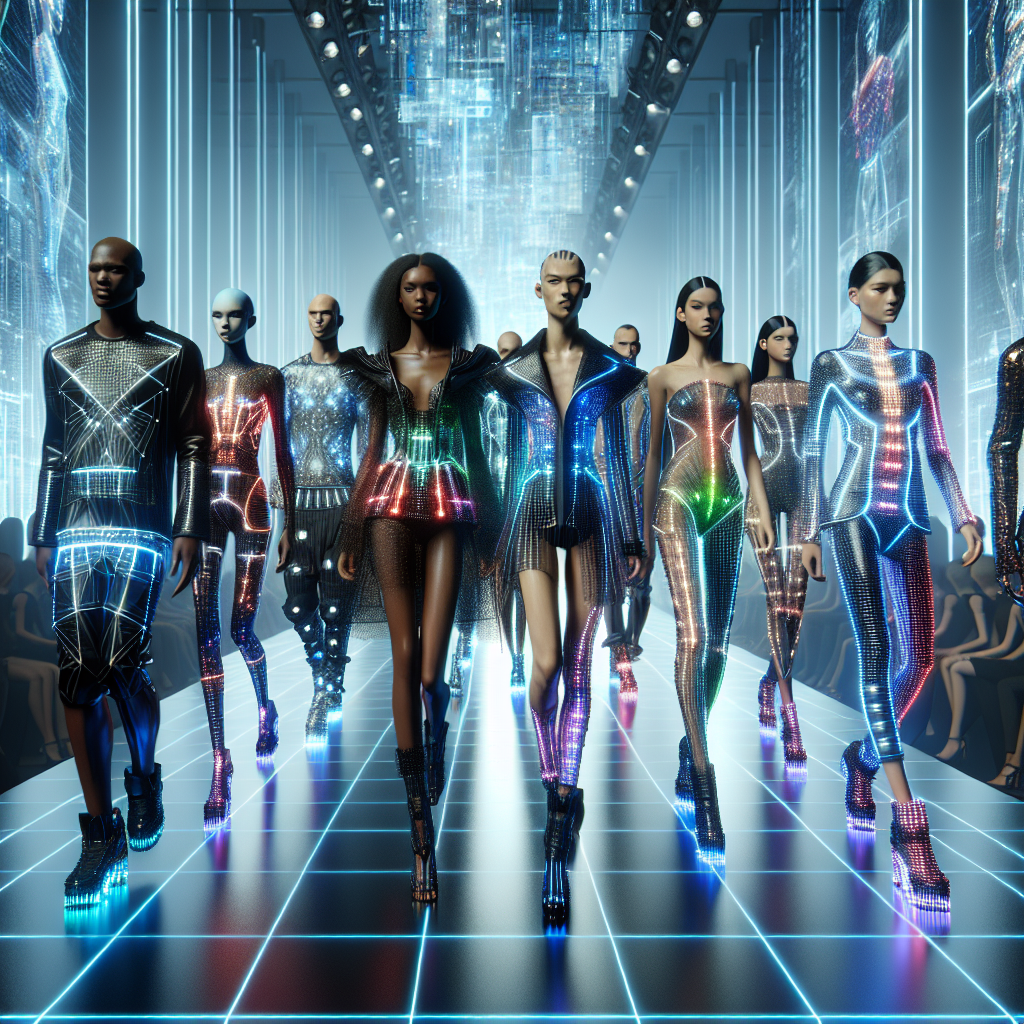Exploring the Rise of Digital Fashion Models
In recent years, the fashion industry has witnessed a technological revolution that has transformed traditional paradigms. Among these innovations, digital fashion models have emerged as a groundbreaking development, offering new possibilities for creativity, representation, and sustainability. This article delves into the rise of digital fashion models, examining their impact on the fashion landscape, the technology that powers them, and the potential they hold for the future.
The Evolution of Fashion Modeling
Fashion modeling has long been a cornerstone of the fashion industry, serving as the bridge between designers and consumers. Traditionally, this realm has been dominated by human models who bring garments to life on runways and in magazines. However, the advent of digital technology has begun to redefine this space. Digital fashion models, also known as virtual or CGI models, are computer-generated figures that can be crafted to embody any desired look or aesthetic. With the ability to exist solely in a digital realm, these models are reshaping how fashion is conceptualized, presented, and consumed, offering designers unparalleled creative freedom and control.
Technology Behind Digital Fashion Models
The creation of digital fashion models relies heavily on advanced technologies such as 3D modeling, artificial intelligence, and computer-generated imagery (CGI). These technologies enable designers to craft hyper-realistic models that can mimic human expressions, movements, and even skin textures. Software tools like Blender, Marvelous Designer, and Daz 3D are commonly used to create intricate and lifelike digital personas. AI plays a significant role in animating these models, allowing them to interact in virtual environments with a level of realism that was previously unattainable. This technological synergy not only enhances the visual appeal of fashion presentations but also streamlines the production process, reducing time and resource constraints.
Impact on the Fashion Industry
The integration of digital fashion models into the fashion industry has far-reaching implications. For designers, these models offer a sustainable alternative to traditional practices by eliminating the need for physical samples and reducing the carbon footprint associated with fashion shows and photo shoots. Moreover, digital models provide an inclusive platform where diversity is limited only by imagination, enabling brands to represent a broader spectrum of identities and body types. This shift also democratizes access to fashion, as brands can engage with global audiences through digital channels, bypassing geographical and logistical barriers. As a result, the fashion industry is witnessing a democratization of creativity and a redefinition of brand-consumer relationships.
Challenges and Ethical Considerations
Despite their advantages, digital fashion models present several challenges and ethical considerations. One major concern is the potential loss of jobs for human models, as brands may increasingly opt for digital alternatives. Additionally, the creation of hyper-idealized digital figures raises questions about perpetuating unrealistic beauty standards and the resultant impact on body image and self-esteem. There is also the risk of misuse, where digital likenesses could be manipulated without consent, leading to legal and ethical dilemmas. Addressing these challenges requires a balanced approach, ensuring that technological advancements in fashion are harnessed responsibly and ethically.
The Future of Digital Fashion Models
As technology continues to advance, the future of digital fashion models looks promising. With improvements in virtual reality (VR) and augmented reality (AR), digital models could soon become interactive entities, enhancing online shopping experiences and personalizing consumer engagement. The potential for real-time customization of garments on digital avatars could revolutionize the way consumers interact with fashion, offering them a more immersive and personalized experience. Furthermore, as sustainability becomes an increasingly pressing concern, the role of digital models in promoting eco-friendly practices is likely to expand. Ultimately, digital fashion models are poised to play a pivotal role in shaping the future of the fashion industry, pushing the boundaries of creativity and innovation.
The rise of digital fashion models signifies a profound transformation within the fashion industry, merging artistry with technology to create new paradigms of expression and interaction. While challenges remain, the potential benefits of digital models in terms of creativity, inclusivity, and sustainability are vast. As the fashion world continues to evolve, embracing these digital innovations will be crucial in navigating the complexities of a rapidly changing global landscape. Through thoughtful integration and ethical considerations, digital fashion models may well become an enduring facet of the industry, heralding a new era of fashion that is as dynamic as it is diverse.










